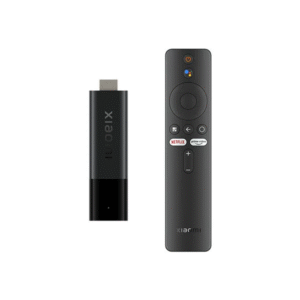XTEN-AV is at the forefront of transforming how professionals approach AV projects with modern, intelligent, and sustainable solutions. In a world where businesses are placing a growing emphasis on environmental responsibility, the AV industry is no exception. Sustainability is no longer a choice but a necessity, and technology is playing a vital role in making eco-friendly practices more achievable. One of the key enablers of this shift is AV Design Software, which allows professionals to plan, design, and implement solutions with reduced waste, optimized energy use, and smarter integration.
This blog explores how sustainable AV design can be achieved with the help of software tools and why going green is the future of the industry.
The Need for Sustainable AV Design
The AV industry has traditionally relied heavily on hardware, extensive cabling, and energy-intensive systems. While these solutions were effective in delivering audio visual experiences, they often came at the expense of the environment. Excess material waste, high power consumption, and limited planning efficiency contributed to the carbon footprint of projects.
Today, clients and organizations are demanding greener alternatives. From corporate offices to universities and event venues, there is a growing push to integrate sustainability into AV design. The challenge lies in reducing environmental impact while still delivering high-quality, reliable systems. This is where AV Design Software steps in to bridge the gap.
How AV Design Software Supports Sustainability
1. Smarter Planning and Reduced Waste
When designing AV systems manually, mistakes and revisions are common, leading to wasted materials such as cables, connectors, and hardware. AV Design Software eliminates much of this waste by enabling precise digital modeling before physical installation. Designers can create detailed diagrams, simulate setups, and plan system requirements with accuracy, minimizing unnecessary purchases and reducing excess material use.
2. Optimized Energy Consumption
Modern AV systems consume significant amounts of power if not properly managed. AV software tools help design systems with energy efficiency in mind by recommending the right equipment and ensuring devices are used effectively. This not only reduces the environmental impact but also cuts operating costs for clients.
3. Virtual Collaboration Reduces Travel
Traditional AV design often required multiple in-person meetings and site visits, which increased carbon emissions through travel. With cloud-based AV Design Software, teams can collaborate virtually in real time, share project updates, and make adjustments without needing constant physical presence. This reduces travel requirements and aligns with sustainable practices.
4. Lifecycle Management of Equipment
AV projects do not end at installation. Over time, equipment requires maintenance, upgrades, or replacement. AV software helps track the lifecycle of devices, ensuring they are used efficiently and replaced only when necessary. This avoids premature disposal of functioning hardware and promotes sustainable usage.
Examples of Sustainable Practices with AV Design Software
Corporate Spaces
In offices, designers use AV software to optimize meeting room setups with energy-efficient displays, lighting, and sound systems. Automated scheduling ensures systems power down when not in use, saving energy.
Education
Universities rely on AV Design Software to implement hybrid learning solutions with minimal waste. Instead of over-purchasing equipment, institutions can plan accurately, ensuring classrooms are outfitted with only what is needed.
Hospitality and Events
Event venues can reduce material use by virtually planning large-scale setups, from stage lighting to sound reinforcement. This prevents over-ordering and ensures resources are allocated efficiently.
Benefits of Going Green with AV Software
-
Environmental Impact Reduction – By cutting waste and reducing energy consumption, AV design becomes more sustainable.
-
Cost Savings – Energy-efficient systems and accurate planning lower costs for both integrators and clients.
-
Client Satisfaction – Businesses value partners who prioritize sustainability, making green AV design a competitive advantage.
-
Regulatory Compliance – As governments introduce stricter sustainability guidelines, eco-friendly AV design ensures compliance.
The Role of XTEN-AV in Sustainable AV Design
XTEN-AV offers a powerful platform that enables AV professionals to design projects with sustainability at their core. By combining automation, AI, and cloud collaboration, the platform empowers designers to cut waste, optimize resources, and deliver greener solutions. With intelligent AV Design Software, XTEN-AV makes it possible to prioritize environmental responsibility without sacrificing innovation or performance.
Future of Sustainable AV Design
Looking ahead, sustainability will only grow in importance across industries. As AV projects expand in scale and complexity, design software will become even more crucial in balancing performance with eco-conscious practices. Expect to see greater integration with IoT devices, real-time energy monitoring, and AI-driven recommendations for greener installations.
Conclusion
Sustainable AV design is not just a trend but a long-term commitment that benefits the environment, businesses, and end users alike. The integration of AV Design Software into workflows provides a pathway to reduce waste, conserve energy, and build smarter, greener solutions. XTEN-AV is leading this transformation by offering tools that make eco-friendly design practical and efficient.
By embracing sustainability, the AV industry is paving the way for a future where technology and environmental responsibility go hand in hand.






